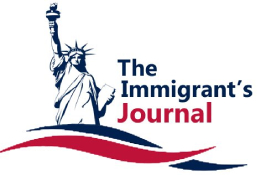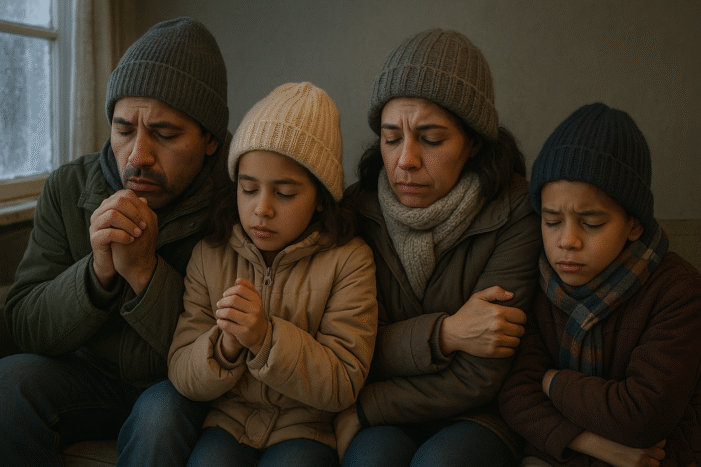By Pearl Phillip | Photo by: AI
As another frigid New York winter approaches, the city’s poorest residents are finding that warmth has become a luxury they can scarcely afford. Behind every rising Con Edison bill and every sputtering radiator lies a larger story of economic inequality and infrastructural neglect. Over the past five years, residential gas prices have climbed by more than 30 percent and electricity rates by over a quarter, while wages for low-income households have barely moved. For many families in neighborhoods like Brownsville, Mott Haven, and East Harlem, this imbalance has created what experts call “energy poverty” — a growing crisis where staying warm comes at the cost of food, medicine, or rent. This article examines how energy costs are redefining winter for thousands of New Yorkers, exposing the intersections between aging buildings, insufficient aid, and the deepening divide between those who can afford comfort and those left in the cold.
A Bronx Winter, Measured in Dollars and Degrees
As temperatures plunged below freezing in January 2024, 67-year-old Rosa wrapped herself in two sweaters and a blanket inside her Bronx apartment. The radiators sputtered weakly all day. On her kitchen table lay an unopened Con Edison bill — nearly $320 for December.
“I never used to be scared of winter,” she said softly. “Now every cold night feels like a warning.”
Rosa is one of tens of thousands of New Yorkers confronting a chilling economic reality: the rising cost of heat is outpacing income growth, leaving many low-income families in a state of “energy poverty.” Across the five boroughs, residents are paying more for less warmth — and the data show why.
Rising Bills, Shrinking Margins
According to the U.S. Energy Information Administration (EIA), residential natural gas prices in New York have increased by 34 percent since 2020, while electricity prices have surged by 27 percent. Meanwhile, inflation-adjusted incomes in the city’s lowest-income ZIP codes — including Brownsville (11212), Mott Haven (10454), and parts of Staten Island’s North Shore (10303) — have stagnated or declined by 2–3 percent.
The result is a worsening energy burden — the percentage of household income spent on energy bills. A recent American Council for an Energy-Efficient Economy (ACEEE) report found that low-income households in the South Bronx and East New York now spend 14–17 percent of their income on utilities — five times the 3 percent affordability threshold recommended by federal energy guidelines. In contrast, middle-income New Yorkers spend less than 4 percent on energy annually.
“We hear from families who turn off the heat during the day to save money, or who crowd into one room with space heaters — which is incredibly dangerous,” said an outreach director at a Bronx non-profit. “In a city this wealthy, no one should have to risk their health just to stay warm.”
Old Buildings, New Pressures
A key driver of the crisis is the city’s aging housing stock. Roughly 68 percent of NYC’s residential buildings were constructed before 1940, and many low-income tenants occupy units with poor insulation, drafty windows, and obsolete boilers.
In NYCHA public housing, home to over 300,000 residents, tenants reported more than 600 heating outages in 2024, according to the City Comptroller’s Office — an increase of 18 percent from the prior year. The average NYCHA building still relies on steam boilers installed more than 50 years ago, many operating beyond their intended lifespan.
For Keisha, a 42-year-old single mother in East Harlem, those statistics are personal. “They say it’ll be fixed in a few hours, but it’s been days,” she said of her public housing unit’s heating failures. “I boil water on the stove to stay warm. My Con Ed bill is insane — and the apartment’s still freezing.”
Tenants facing similar heating failures can consult the resource, Addressing the Problem of No Heat or Little Heat in NYC Guide, which outlines required landlord responsibilities, emergency steps, and how to file heat complaints through 311 and HPD.
Insufficient Relief: A Safety Net with Holes
Programs such as the Low Income Home Energy Assistance Program (LIHEAP) are meant to offset these rising costs, but the scale of need dwarfs available funding. In 2024, over 1.1 million New Yorkers qualified for LIHEAP, yet only 42 percent received aid. The average winter benefit was $530, which covered barely one-and-a-half months of typical heating costs for a small apartment.
“LIHEAP is a lifeline, but it’s stretched thin,” explained John Choi, energy policy analyst at the Urban Justice Center. “New York needs more state and city-level investment — not just reliance on limited federal dollars.”
The Heat Equity Initiative, launched by the City in early 2025, aims to retrofit 10,000 low-income housing units by 2027 with cold-climate heat pumps, better insulation, and efficient windows. Preliminary city data indicate that upgraded buildings have seen:
• Average energy-bill reductions of 20 percent
• Per-building CO₂-emission cuts of 30 metric tons
• Improved indoor temperature stability, with 62 percent of tenants reporting fewer heating interruptions.
Still, even if targets are met, that’s less than 3 percent of all income-eligible households, leaving a vast majority outside the program’s reach.
Data Snapshot: Energy Poverty in NYC (2020 – 2025)
| Indicator | 2020 | 2025 | % Change |
| Avg. Residential Gas Price (per therm) | $1.13 | $1.52 | +34 % |
| Avg. Residential Electricity Rate (¢ / kWh) | 21.4 | 27.2 | +27 % |
| Median Income (Low-Income ZIPs) | $41,800 | $42,600 | +1.9 % |
| Avg. LIHEAP Benefit | $480 | $530 | +10 % |
| Households with “High Energy Burden” (> 10 % of income on utilities) | 15 % | 22 % | +47 % |
Sources: U.S. EIA, NYC Comptroller, ACEEE, Urban Justice Center, LIHEAP State Data 2025
The Broader Picture: Climate and Inequality Collide
Energy poverty intersects with broader social inequities. Data from the NYC Department of Health and Mental Hygiene reveal that emergency-room visits for cold-related illness are three times higher in low-income neighborhoods compared to wealthier areas like the Upper East Side or Park Slope. The correlation between poor building conditions and poor health outcomes is undeniable.
Moreover, climate models project that New York’s winters will become colder in short bursts but more volatile overall, with sharp temperature swings driving up both peak energy demand and costs. For vulnerable households, this volatility can mean financial and physical danger.
Can Zohran Mamdani Lower Heat Prices? The Legal and Structural Limits of City Power
As New York City prepares for Mayor-elect Zohran Mamdani to take office in January 2026—after campaigning vigorously on housing affordability and rent freezes—many residents are asking a simple question: Can he also lower the price of heat?
The short legal answer is no, at least not directly.
Energy costs in New York State are governed primarily by state law, not city law. Utility companies such as Con Edison and National Grid operate as state-regulated monopolies, and their rates are controlled through rate-setting proceedings overseen by the New York State Public Service Commission (PSC). While Mayor Mamdani may comment on rate cases or lobby aggressively for reforms, he cannot unilaterally reduce heating or electricity rates.
Still, Mayor-elect Mamdani is not without tools. His administration can influence heating costs through expanded assistance programs, accelerated building retrofits, and coordinated political pressure at the state level.
For New Yorkers battling energy poverty, the distinction between lowering rates and lowering bills is crucial. Mayor-elect Zohran Mamdani cannot order utilities to cut prices, but he can reduce what families ultimately pay by improving housing conditions, increasing subsidies, and challenging the regulatory processes that keep rates high.
A Chilling Future
For Rosa, the numbers translate into daily trade-offs. “I live on Social Security. If I pay the heat, I can’t eat as well as I should. If I don’t pay, they shut it off,” she said. “I never thought I’d be old and cold in my own home.”
Unless policy interventions scale rapidly, New York’s winter future will remain divided — between those who can afford warmth and those who can only dream of it.
This story was produced through training provided by the J-School’s Equity Through Data Project, thanks to generous support from the Charles H. Revson Foundation.

